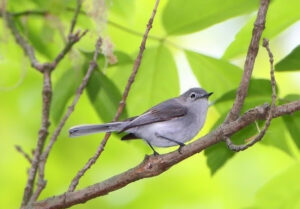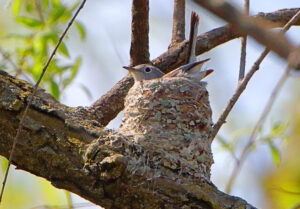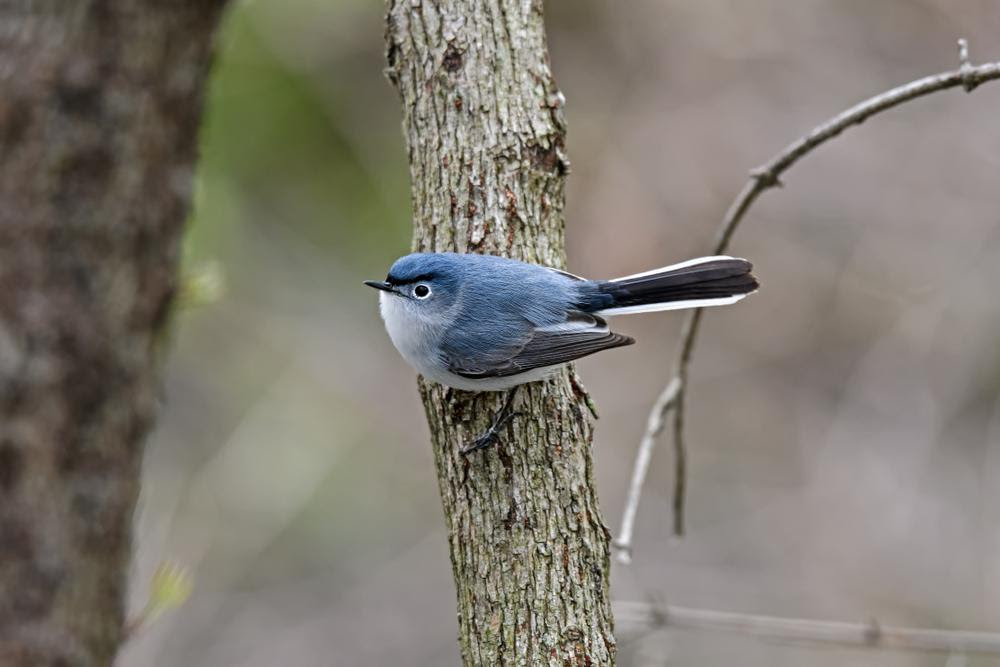Blue-gray Gnatcatcher, Polioptila caerulea
Bill Rowe
It’s hard to find a bird more charming, by human standards, than the Blue-gray Gnatcatcher, a woodland sprite that rivals the kinglets for its hyperactivity and its tiny size. By overall length, as stated in field guides, it may seem a bit bigger, until you realize that nearly half of that length is the tail, which the bird twitches from side to side as it jumps about in pursuit of small insect prey. From April on through the summer, a walk through virtually any patch of forest should gain you a look at some gnatcatchers, especially in early spring when the small new leaves make it easier to spot birds. You may locate them first by their thin, fussy, high-pitched calls—if indeed your ears still pick up those frequencies—and you may even find them building their nest or tending the eggs and young inside it; they will often place it on a bare branch not too high up, more readily visible than those of many small birds. The nest is a round turret of plant material with bits of gray lichen all over the outside and finer, softer materials inside, and with strands of spider web helping to attach it to the branch. By mid-September, most of our gnatcatchers have left for warmer climes, although they don’t go all that far, just to the southernmost states and Mexico. Three other gnatcatcher species live in the western U.S. and ten more in the tropics, none of them migratory like this one. The Blue-gray Gnatcatcher population has its ups and downs by region, but overall it seems to be at least holding steady or even gradually increasing.
IDENTIFICATION: In the eastern U.S., gnatcatchers are easy: there’s only one species. It is truly blue-gray with a fine, thin bill and a long black tail edged white (and mostly white from below when closed). Males in breeding season have a dark line over the eyes and across the forehead (photo above), while females are plain there (below left). The situation gets more complicated in the southwest, where Blue-gray Gnatcatchers may also be found and confused with another widespread species and two very local ones.
ST. LOUIS STATUS: A very common migrant and summer resident, apt to show up in parks and yards while passing through, but limited to forested areas in summer when nesting.
Learn more and listen to the songs and calls of Blue-gray Gnatcatchers here.


Female; tail white from below
Photo Credit: Al Smith
Female on nest
Photo Credit: Al Smith




